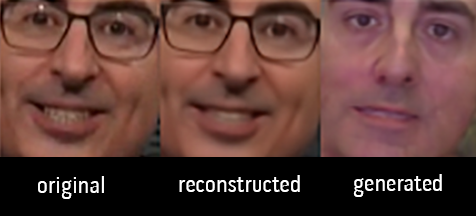

Then Ume and Fisher released their creations into the wilds of the internet. The reaction was completely unexpected, as online viewers debated whether the real Tom Cruise had in fact joined TikTok. It still took over two months to build the computer model, then dozens more hours ironing out the glitches frame by frame using digital graphics software. Ume collected over 6,000 images of the Hollywood actor taken from different angles, with different facial expressions, to train the algorithm. "For a deepfake, you start with the source data - I mean pictures and videos of the character you want to deepfake.
Mr deep fake how to#
"I did a few months of research, how to do it, and a half-year later I had my first deepfake," he says. Where others were exploring the darker side of deepfakes, Ume saw the creative potential. Ume first got interested in deepfakes in late 2018 when he saw a news report about how the technology was being used for malicious ends. Their partnership would soon go on to produce some of the most convincing deepfakes ever made.

"People were amazed, like, 'How did he do this?'" Ume recalls. The resulting video, uploaded to social media, got the reaction the pair were after. Fisher wanted Tom's "concession" speech to use deepfake technology for the big reveal, where Tom Cruise would seem to emerge dripping wet from a swimming pool, laughing manically and draped in an American flag. When Fisher started planning the sequel, he turned to Ume for help. "It was a funny video where Tom Cruise was running for president," Ume says. While legislation eventually may offer protection against deepfakes, I believe the market could be quicker-provided we, as consumers and citizens, care.But the man in the video is not Tom Cruise, it's Miles Fisher, an actor who created a spoof campaign clip called "Run Tom Run" in the lead-up to the 2020 US presidential election. To be effective in practice, such systems would have to be widely adopted by all content creators, which will take time. The process could be delivered as simply as through an icon-much like the current browser padlock icon that indicates any information you send to that particular website is protected from third-party tampering en route.
Mr deep fake software#
president, the technology would help your browser or media-viewing software verify the source of the video (for example, a news network or the White House). Under such a system, every time you watch a video of, say, the U.S. What People Should Leave Off Their Résumés (but Rarely Do)Ī better approach with a longer time horizon is media provenance or authentication systems to verify the origins of images and videos.įor instance, has developed a prototype of a system called AMP (Authentication of Media via Provenance) that enables media-content creators to create and assign a certificate of authenticity to their content.Why I Hired an Astrophysicist as My Marketing Chief.How Small Businesses Can Cultivate Loyalty Amid the Great Resignation.Why Home Buyers Should Comparison Shop for Mortgage Rates-but Don’t.While these detectors can be successful in the short term, people looking to evade such systems will likely just respond with better technology, creating a continuing and expensive cat-and-mouse game. As such, machine-learning algorithms have been trained to detect deepfakes using eye-blinking patterns. For instance, while deepfakes appear highly realistic, the technology isn’t yet capable of generating natural eye blinking in the impersonated individuals. One such solution is to detect deepfakes via machine-learning methods. That is why I believe we are going to have to rely on technology to protect us from a problem it helped create.

But the technology is moving so fast that lawmakers will likely always lag behind.

Some researchers have proposed putting the onus on website platforms such as Facebook and YouTube by making their protections in relation to user-generated content conditional on their taking “reasonable steps” to police their own platforms.īroad adoption of these kinds of laws could create meaningful deterrents-eventually.
Mr deep fake free#
One stumbling block is the need to also protect parodies and other free speech.Īnother big challenge is that in an online world where people can anonymously upload content, it can be difficult to find the individuals behind deepfakes.
Mr deep fake update#
Current laws targeting fraudulent impersonation weren’t designed for a world with deepfake technology, and efforts at the federal level to update these laws have faltered so far.


 0 kommentar(er)
0 kommentar(er)
